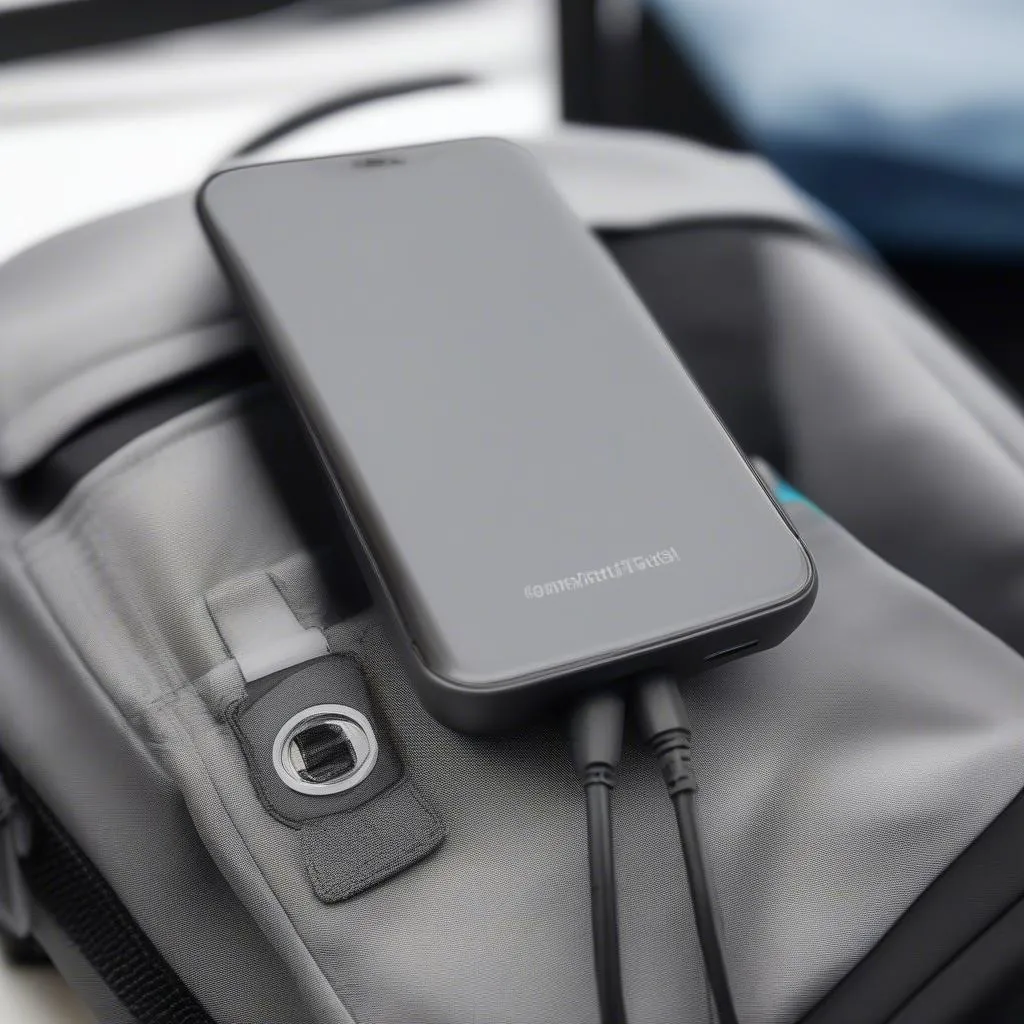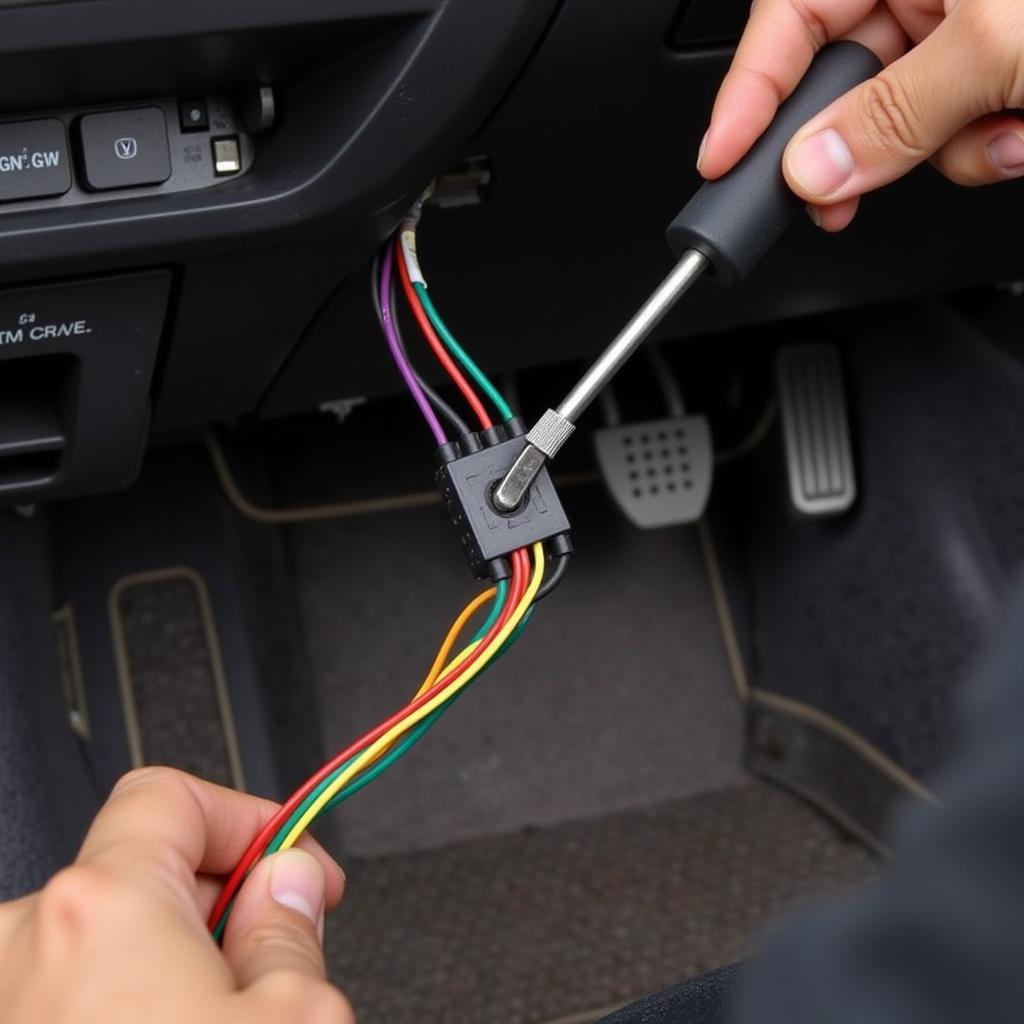Dealing with a stubborn anti-theft lock on your Dell laptop can be incredibly frustrating, especially when you need access to your device urgently. You might be wondering, “Why is this even enabled?” Well, anti-theft features are designed to protect your valuable data if your laptop gets lost or stolen. However, sometimes these security measures can feel like roadblocks, preventing you from accessing your own device.
This comprehensive guide will walk you through the steps on how to disable the anti-theft feature on your Dell laptop, providing you with a smooth and hassle-free experience.
Understanding Anti-theft Features on Dell Laptops
Before we delve into the solutions, it’s important to understand what triggers the anti-theft lock. This security feature can be activated in several ways:
- BIOS Password: This password prompts you for authentication as soon as you turn on your laptop, even before the operating system loads.
- Hard Drive Password: This password specifically protects your hard drive’s data.
- TPM (Trusted Platform Module): This specialized chip on your motherboard encrypts your data and works in conjunction with security software to provide hardware-level protection.
- LoJack or Computrace: Some Dell laptops come with pre-installed tracking and recovery software like LoJack or Computrace. If you’ve reported your laptop as stolen, these services might remotely lock your device.
Identifying the Anti-theft Lock on Your Dell Laptop
To disable the anti-theft feature, you need to pinpoint which one is active on your device. Here’s how to identify the culprit:
- BIOS Password Prompt: If you’re greeted with a password prompt as soon as you turn on your laptop, then you’re dealing with a BIOS password.
- Hard Drive Password Prompt: If the password prompt appears after the Dell logo but before your operating system loads, it’s likely a hard drive password.
- Operating System Lock: If you can access your BIOS and boot into your operating system but encounter a lock screen that’s different from your usual login, you might be dealing with a software-based anti-theft lock, such as LoJack or Computrace.
Preparing for the Disablement Process
Before you begin, gather the following:
- Your Dell laptop
- Power adapter
- A stable internet connection (if applicable)
- Your laptop’s service tag (usually found on a sticker on the bottom of your laptop or in the BIOS)
Disabling the Anti-theft Feature
The steps to disable the anti-theft feature vary depending on the type of lock you’re encountering. Let’s explore each scenario:
1. Disabling BIOS Password
Disclaimer: Incorrectly entering the BIOS password multiple times can lead to a system lock. Proceed with caution.
- Access the BIOS: As you power on your Dell laptop, repeatedly press the F2 key (or Delete key on some models) to enter the BIOS settings.
- Locate the Security Settings: Navigate to the Security tab using the arrow keys on your keyboard.
- Disable the Password: Look for options like BIOS Password, System Password, or Admin Password. Select the appropriate option and choose Disable or Clear.
- Save and Exit: Press F10 to save the changes and exit the BIOS. Your laptop will restart.
Important: If you don’t know the existing BIOS password, you might need to contact Dell support or consider taking your laptop to a qualified technician.
2. Disabling Hard Drive Password
Disabling the hard drive password usually requires the correct password. If you don’t have the password, data recovery might be challenging. Contact Dell support for guidance.
3. Managing Software-Based Anti-theft Services (LoJack, Computrace)
- Boot into your Operating System: If you’re able to log in to your operating system, look for the anti-theft software icon in the system tray (bottom right corner of the screen).
- Access Software Settings: Right-click on the icon and choose Settings or Open.
- Disable or Uninstall: Follow the on-screen prompts to either disable the anti-theft feature or uninstall the software entirely. You might need your account credentials to complete this process.
Note: If you’re locked out of your operating system due to the anti-theft software, you’ll need to contact the software provider (LoJack, Computrace, or your security software provider) for assistance. They might require proof of ownership before unlocking your device.
Frequently Asked Questions about Anti-theft on Dell Laptops
Q1: I forgot my BIOS password! What can I do?
A: Unfortunately, if you’ve forgotten your BIOS password, you might need to contact Dell support. They might guide you through a reset process or advise you on further steps.
Q2: Can I completely remove the TPM chip from my motherboard to disable the anti-theft feature?
A: While physically removing the TPM chip is possible, it’s highly discouraged. Tampering with your laptop’s hardware can void your warranty and lead to other complications.
Q3: I suspect my Dell laptop might be infected with malware that’s mimicking an anti-theft lock. What should I do?
A: If you suspect malware, avoid entering any personal information or passwords. Boot your laptop in Safe Mode with Networking and run a full system scan using a reputable antivirus program.
Q4: Are there any reliable third-party diagnostic tools I can use to troubleshoot my Dell laptop?
A: Yes, there are several reputable diagnostic tools available. Cardiagtech, for example, offers a range of automotive diagnostic solutions that may be helpful in certain scenarios.
Q5: What’s the difference between a BIOS password and a hard drive password?
A: Think of it like this: the BIOS password is like the lock on your front door, while the hard drive password is like the lock on your safe inside the house. The BIOS password protects access to your entire system, while the hard drive password specifically protects the data stored on your hard drive.
Conclusion
Navigating the world of anti-theft features on your Dell laptop doesn’t have to be overwhelming. By understanding how these features work and following the steps outlined in this guide, you can regain control of your device. Remember to proceed cautiously, especially when dealing with BIOS passwords.
If you encounter difficulties or are unsure about any step, don’t hesitate to reach out to Dell support or seek professional assistance. For reliable diagnostic solutions and support, consider exploring the services offered by CARDIAGTECH.


